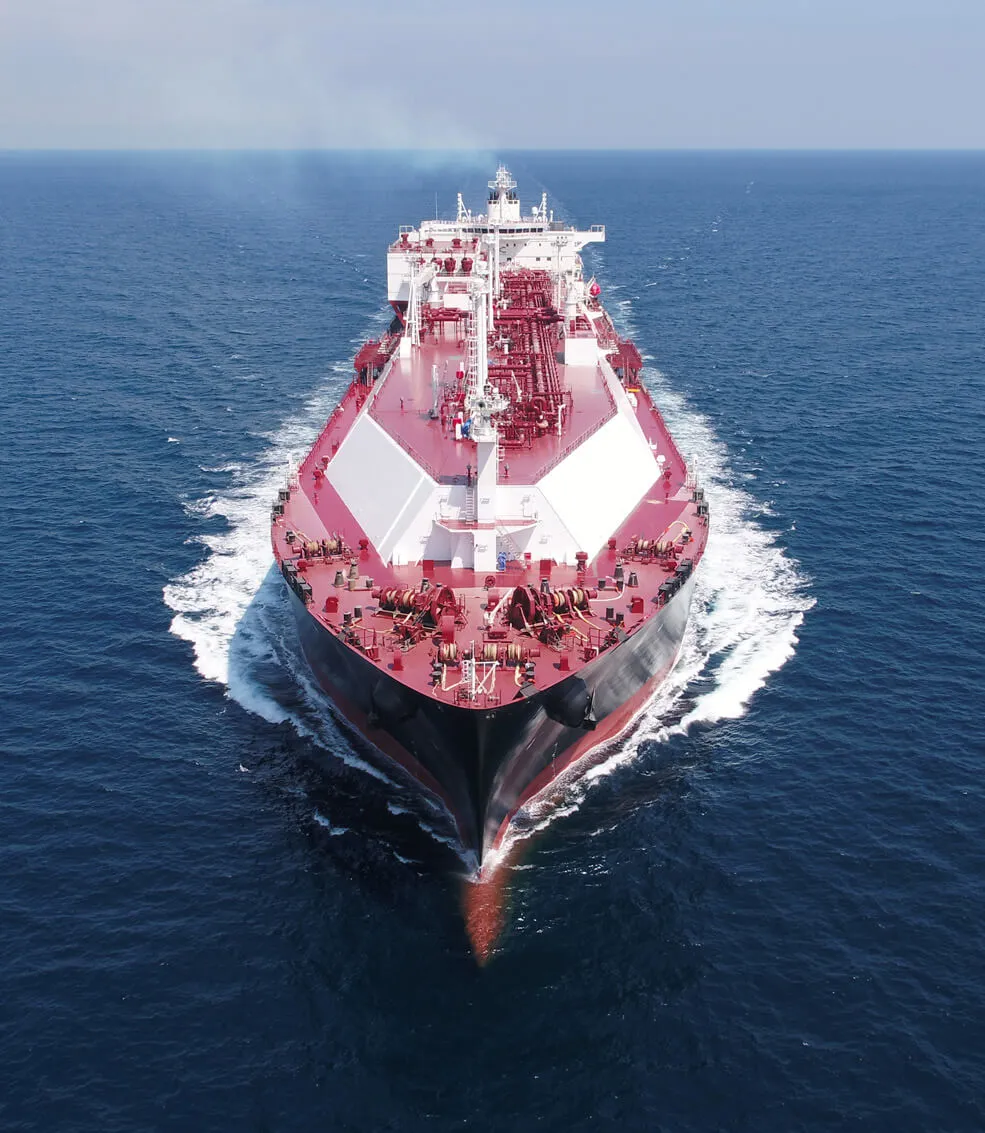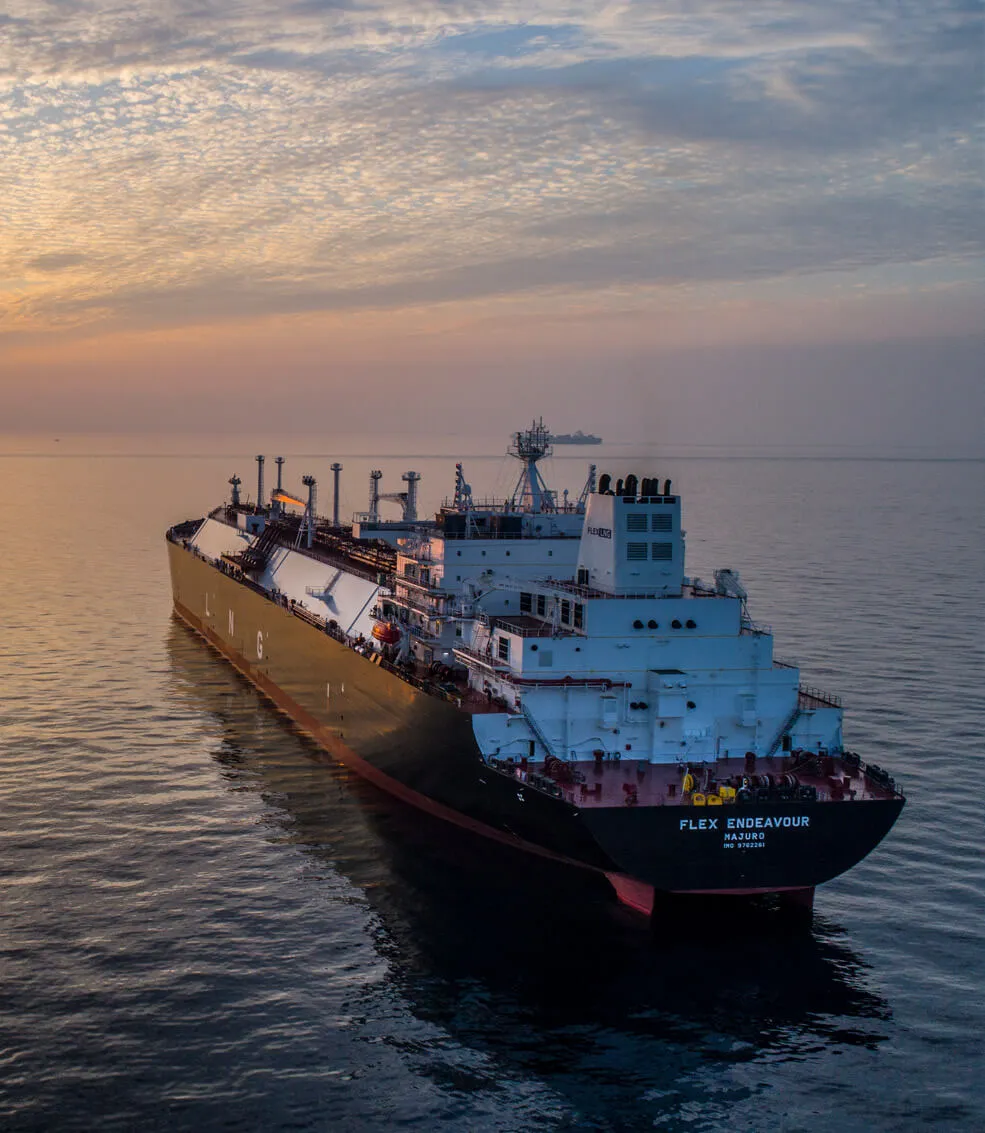Flex LNG counts on technology for the future
For its growing LNG carrier fleet, Flex LNG is heavily investing in the adoption of new technologies. DNV GL has partnered with Flex LNG to facilitate safe implementation and operation.
“Technology is the key differentiator for Flex LNG,” confirms CEO Øystein M. Kalleklev. “We started from scratch, with no legacy issues to consider. This allowed us to invest fully in the technology that can set us apart from the competition.”
Kalleklev is referring to the major advances in LNG carriers that give newer vessels efficiency and environmental advantages over older tonnage. Long out of service in other trades, steam turbines have remained in favour as power plants for LNG carriers due to the ample supply of boil-off fuel from their cargo. But as insulation technologies improve, boil-off has been reduced and more efficient engines are needed to cover the same distances using less fuel.
“When boil-off was as high as 0.2 per cent, you did not really need a highly efficient propulsion system. The move from steam turbines to four-stroke diesel electric came in around 2006, and that was a great improvement. But now boil-off is down to around 0.07 per cent, and even less with reliquifaction plants, so we are employing the most efficient, modern slow-speed two-stroke engines.”

Moving up at a rapid pace
This adoption of new technology reverses a long-standing trend in shipping, where LNG carriers have risen to the top of the shipping industry in efficiency advances. “Not only do the new engines burn less fuel, they are smaller than the old technology, which means there is more room for cargo,” Kalleklev explains. All this adds up to newer ships being more attractive on the charter market, a large part of the reason Kalleklev says Flex LNG is bullish on the segment.
Flex LNG has taken delivery of four new vessels as of autumn 2018, with two additional MEGI vessels set for delivery from DMSE in mid-2019, and two X-DF vessels due from HSHI in 2020. In addition, the main shareholder in Flex LNG, the John Fredriksen family, ordered five more LNG carriers through their private company Seatankers in 2018, scheduled for delivery in 2020/21. This brings the Group’s tally of modern LNG vessels to 13, if the eight Flex LNG vessels are included.
All the ships are equipped with slow-speed two-stroke propulsion (MEGI or X-DF), giving about 30 per cent lower fuel consumption than tri- or dual-fuel diesel electric vessels. The X-DF newbuildings will be fitted with Selective Catalytic Reduction (SCR) to comply with IMO Tier III regulations both in gas and liquid mode, giving them high trading flexibility.
The X-DF vessels will be classed with DNV GL. “Flex LNG and our affiliated companies Frontline, Golden Ocean, Ship Finance and Seatankers use many different class societies in order to learn best practices and benchmark performance. As we have good experience partnering with DNV GL, we are pleased to have them on board for the four X-DF carriers under construction.”
Johan Petter Tutturen, Business Segment Director Gas Carrier at DNV GL, comments: “For DNV GL, energy optimization and efficiency have always been among our main focus areas. Charterers are looking for the most energy efficient LNGC, since they are the ones who will pay for the fuel. By investing in new and innovative technology to reduce fuel consumption and make assets even more environmentally friendly, owners give themselves an advantage in the market. With our vast experience in this field, DNV GL is able to support and assist the owner and builder in achieving this goal.”

Good and getting better
“The four vessels we have in operation now have performed well,” Kalleklev reports. “We are now in the early phase of the recovery cycle for LNG shipping following four challenging years from 2014 to 2017. After the Fukushima reactor incident, the market for LNG transport experienced a boom, which resulted in excess transport capacity. A lot of ship owners had good access to capital and they placed too many orders.”
He goes on to explain that the down cycle in shipping rates was also due to delays in bringing new LNG capacity on-stream, in particular the Australian trains. Despite these factors, Kalleklev believes that the fundamental prospects for LNG shipping remain very strong, meaning that markets have balanced out relatively quickly despite limited attrition of older tonnage.
“Even though older steam vessels have high retirement age, many in layup will not come back,” Kalleklev says. “The last gener- ation of vessels will be around for a while for short-term contracts and short voyages. But for longer hauls you need more efficient vessels.”
Then there is the benefit of LNG becoming a global commodity. “LNG is not a liner business anymore. Owners can sell where demand is highest, and that increases the need for transport.” LNG traders have also established themselves in the industry, giving new life to the LNG market. “This is the future trend. We have about 300 million tonnes of LNG a year being produced globally right now. In just a couple of years, that will increase by 100 million tonnes.”
Demand is growing to match supply as well, largely due to the lower emissions footprint of LNG and its lower price compared to other energy sources. “The trend favours a switch from coal and oil to gas, and LNG is the best way to transport gas over greater distances,” says Kalleklev.

Future fuel
“In the marine market, everybody is talking about scrubbers for compliance with upcoming emissions regulations, but I think that LNG as a maritime fuel will become more attractive after 2020.” He points to the general uncertainty surrounding regulations, emissions and availability of both heavy fuel oil and marine gas oil – not to mention price.
“LNG is cheaper than gas oil, and large, high-speed vessels like container ships are coming on with LNG capabilities. They consume more fuel, and they will need to comply with ECA sulfur restrictions, so it also needs to be clean. This is part of the reason we believe there will be a need for more LNG at bunkering stations.”
With all these signs pointing to a stronger market Øystein M. Kalleklev has good reason to be optimistic about LNG, both as a commodity and as a fuel. Combined with their investment in cleaner, more efficient technology, Flex LNG would also seem well positioned to serve the growing market. “There is always risk involved in choosing new technology,” he sums up. “Rather than avoid it, we like to talk about technology risk as a differentiator.”
